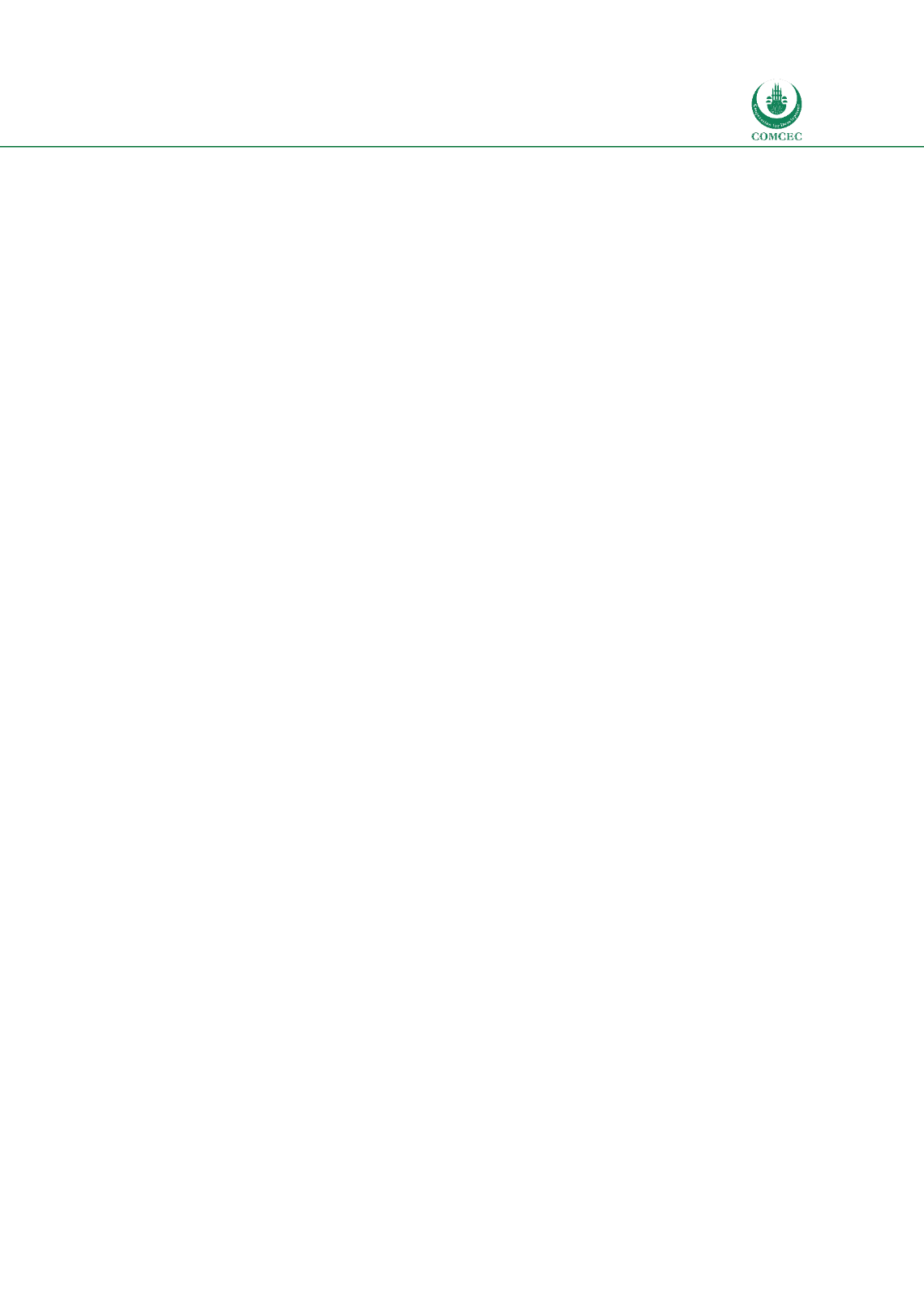

National and Global Islamic Financial Architecture:
Prolems and Possible Solutions for the OIC Member Countries
111
sector in the recent past has been significant whereby it grew by 327.6% during June 2010 to
Feb 2016 compared to growth of 59.7% for the conventional assets during the same period.
There were 26 modaraba companies in the country with assets worth PKR 35.56 billion (USD
339.31 million) in February 2016 (SECP 2016). The total Shariah compliant mutual funds and
pension funds in Feb 2016 were PKR 133.2 billion (USD 1.27 billion) and 6.353 billion (USD
60.62 million) accounting to 27% and 40% of the total respectively (SECP 2016). KSE Meezan
Index (KMI-30) was launched in 2008 to track 30 Shariah-compliant companies.
4.7.1. Legal Infrastructure
Supporting Islamic Finance Laws
There is no separate act or law for Islamic banking and finance in Pakistan, and the Banking
Companies Ordinance 1962 (BCO 1962) is applicable to both conventional and Islamic banks.
However, after the report on interest-free economic system published by the Council of Islamic
Ideology (CII) in 1980, the Banking and Financial Services (Amendment of Laws) Ordinance,
1984 (BFSO 1984) was introduced which amended the Banking Companies Ordinance 1962
along with several other laws such as the State Bank of Pakistan Act, 1956, Banking Companies
(Recoveries of Loans) Act, 1979, The Negotiable Instruments Act, 1881, The Limitation Act,
1908 and the Code of Civil Procedures Act, 1908 to accommodate to the practice of Islamic
banking in the country. Strategic Plan 2014-18 of SBP has initiatives to introduce further
changes such as adding a separate chapter/part on Islamic banking in Banking Companies
Ordinance 1962, making changes in SBP Act 1956, reviewing the Recovery of Finance
Ordinance 2001, Microfinance Institutions Ordinance 2001, and any other related laws to
further support the Islamic financial sector in the country.
There are various statues, regulations and the guidelines that affect the capital market in
addition to Circulars/Circular letters/regulations, rules, issued by the Securities and Exchange
Commission, Pakistan (SECP). While the Insurance Ordinance 2000 identifies takaful as one
form of insurance, details on the legal framework of takaful appears in Takaful Rules 2005
(SECP 2005). The Modaraba Ordinance 1980 also permits the issue of new interest-free
instruments of corporate financing named Participation Term Certificate (PTC). While some
general laws (such as Companies Ordinance 1984,
REIT Regulations 2015;Guidelines for the
Issue of Term Finance Certificates (TFCs) to General Public, Listed Companies [Prohibition of
Insider Trading] Guidelines) affect both conventional and Islamic capital markets, there are
some specific laws that affect the latter only. These include Government of Pakistan Ijara Sukuk
Rules 2008, Sukuk Regulations 2015, and Guidelines for Issue of Certificate of Musharaka for
Modarabas. Similarly, other than laws that affect both conventional and Islamic NBFIs
(Guideline for Guidelines for Bancassurance 2010, The Banking Companies Ordinance 1962,
Microfinance Institutions Ordinance 2001, The Financial Institutions (Recovery of Finances)
Ordinance 2001), laws and regulations affecting the takaful and Islamic NBFIs include Takaful
Rules 2005 Modaraba Companies and Modaraba (Floatation and Control) Ordinance 1980,
Modaraba Companies and Modaraba Rules 1981, and
Prudential Regulations for Modarabas, 2004(amendment in 2008). The Securities Act of 2015 recognizes sukuk as one of the
instruments of capital markets (SECP 2015).
















